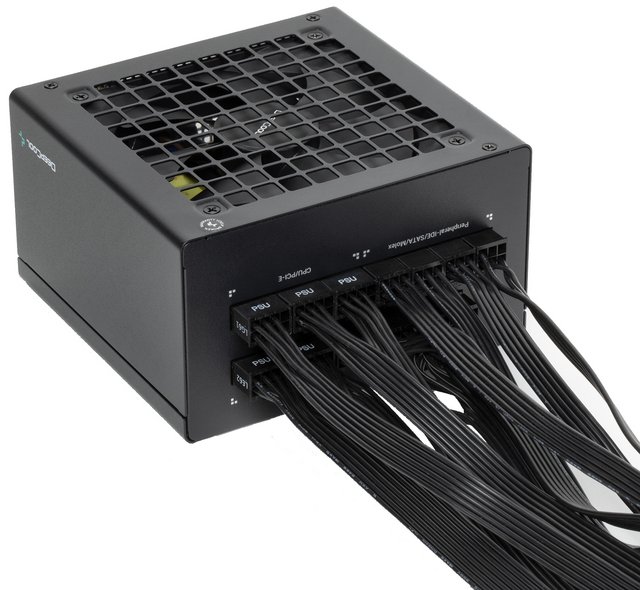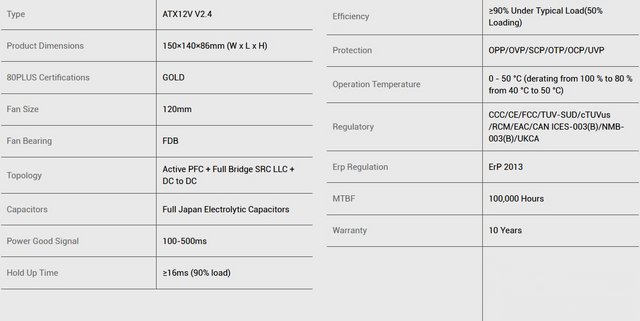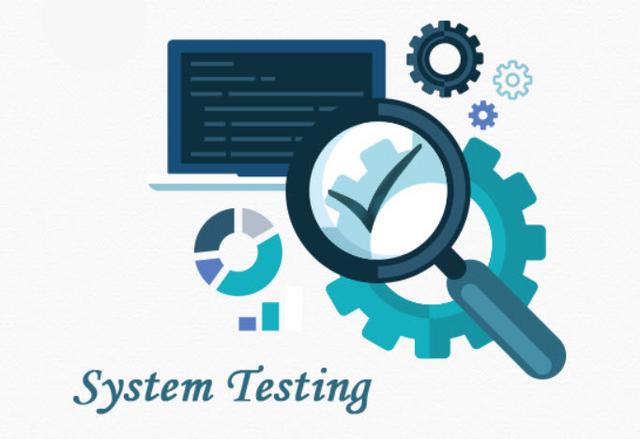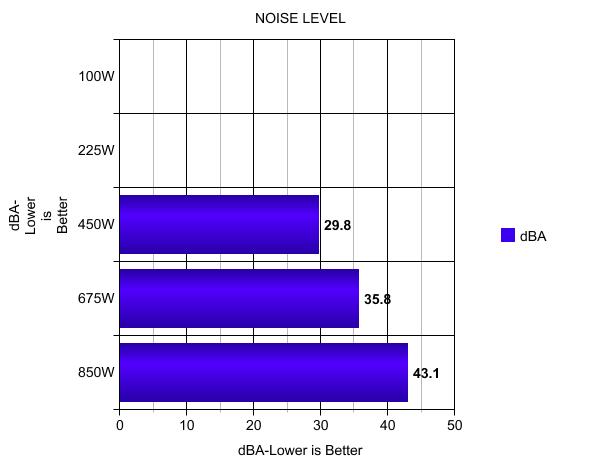-
Deepcool PQ850M
Introduction
Many of our readers are familiar with DeepCool products for their good price-performance ratio. With the same approach, lets have a look on it's new PQ850M. DeepCool PQ850M is a fully modular source with a maximum power of 850W and 80PLUS Gold efficiency. The PQ-M family of sources consists of 4 models, differentiated according to the maximum power offered: 650W, 750W, 850W and 1000W. Japanese capacitors and 10 year warranty should be sufficient reasons to consider this source if you are considering a purchase. There is also a semi-passive mode for lower output at light loads, which can be deactivated with the switch next to the exhaust grille. But not before I finish reading this review, of course.

As usual, all modern protection circuits (including UVP, OVP, SCP, OPP, OCP, and OTP) are integrated. Soon, with the wide adoption of the PCIe 12+4 pin (12VHPWR) connector, there will be limited room for PSUs with less than 750 W maximum power output for use in systems with dedicated graphics cards, while the higher-end GPUs will require stronger power supplies. The problem is that it is not ATX v3.0 compatible, so it lacks PCIe 12+4 pin connectors, which will be a requirement for upcoming GPUs. Hopefully, DeepCool will soon update it to meet the newest requirements of the ATX specification.

Packaging & Contents
The power supply is supplied in an unpainted cardboard box with color printing. A thick paper, is put on top of the box. The thick paper is almost disposable, but the box itself is quite standard. Unfortunately, the box does not have a carrying handle, and this situation is quite typical for modern power supplies, regardless of their weight. You can see on the front of it a photo of the PSU with a rather unusual fan grill.

At the back, there is information about the specification.

Protection inside the box is good, with foam spacers protecting the PSU.

The bundle includes fixing bolts, Velcro straps, and two leaflets.




All cables from DeepCool PQ850M are fully modular. These are comfortable flexible cables of the same gauge 18 AWG. This indicator is enough for the most loaded lines and with a margin is enough to power the periphery. The ATX 20 + 4pin cable is connected to the power supply unit body with two dedicated connectors. The ATX cable is long at 610 mm.

The CPU auxiliary power supply has two EPS 12V 4 + 4pin connectors. One connector is mounted on each cable.

The PCI-Express auxiliary power supply has one connector per cable and can output a total of three systems. There are only three PCIe connectors, so this PSU is not suitable for mining applications or workstations, only gaming, as more than three PCIe connectors aren't needed. Also it lacks PCIe 12+4 pin connectors, which will be a requirement for upcoming GPUs.

The SATA power cable comes with two cables with four connectors. There are many SATA connectors, but I would like to at least have four 4-pin Molex connectors. The distance between peripheral connectors is only 120 mm. Finally, there are no in-cable caps.

The SATA power supply and peripheral 4pin combo cable. The SATA power supply has 2 connectors and supports 10 system power supply together with the SATA power supply dedicated cable.

The peripheral 4pin cable has 3 connectors and can output a total of 5 systems including the combo cable.

The main power cable of unit.

The final accessory is very interesting. It is a test plug used to power on the PSU without it being connected to the motherboard. You could use something like this to fill a water-cooling loop or test that your drives and RGB lights are connected properly.

A Closer Look Outside
The length of its body is about 140 mm, an additional 15-20 mm is required for the supply of wires, so during installation it is worth counting on an installation size of about 160 mm. The painting is of excellent quality. The exterior design is also unique because of the weirdly patterned fan grille. The square holes are large, which benefits airflow, but also increases radiated EMI, and they don't significantly protect the fan from loose wires, or other objects. The edge part has a round shape.

There is only a small sticker with DeepCool's logo on the sides. It should also be noted that the direction of the screen printing is the same on both sides, which is why the only "correct" position would appear to be the one with the fan facing down.

You can see the 120mm FDB fan responsible for cooling through the grid-shaped grill. The fan is protected by a stamped waffle style grill with large squares that draw air in. Four screws here are responsible for mounting the fan, and the same number for access to the inside of the source. One of the latter is carefully covered with a warranty sticker valid for as long as 10 years - during this time, the owners will surely have time to change more than one system.

The power specifications label has been put on the bottom of the PSU. The + 12v line has a single-rail configuration, capable of delivering 70A and 840W respectively. The +3.3 and + 5v rails are DC-DC derived and rated at a maximum of 20A each, together they can deliver a maximum of 100W, being more than enough considering the fact that in modern systems the main consumers are powered from + 12v.

The back is almost entirely ventilated. At the back of the PSU you’ll find a standard power connection along with a bright teal power switch matching the DeepCool logo color.

Nearby, you will find the activation switch for the Hybrid Mode fan control. On closer examination, you can see a small mistake: the inscription "On" is turned upside down. However, as they say, the speed does not affect. When enabled, the power supply will convert into a semi fanless mode that disables the cooling fan when overall load is below 30%. When the Hybrid Mode is disabled the fan will follow a logarithmic RPM scale starting at around 600rpm and will ramp to the 1700rpm max depending on the loading condition. I would have liked to have more room between the two switches however, under ideal conditions you should only need to activate either one of the those switches on rare occasions.

The modular panel has eleven sockets. The purpose of each socket is clearly marked in English at the connection of the modular wire. In addition to being divided into areas for each connector type, there is no need to worry about making a mistake because the connector shape is different.

A Closer Look Inside
Once the upper cover has been removed, an operation that requires the seal to be broken and the consequent loss of the ten-year warranty offered by the manufacturer, we immediately notice the PCB comes from Seasonic's FOCUS series. It's a design featuring a full-bridge topology on the primary side, along with an LLC resonant converter. We find typical stuff on the secondary side: a synchronous design for the +12V rail and a couple of DC-DC converters for the minor rails. The filtering caps come from Chemi-Con.

The first part of the transient filter is on a small PCB located right behind the AC receptacle. A couple of Y caps and a single X cap are there, along with a CM02X that blocks current through the X cap discharge resistor when AC voltage is connected. The same IC also automatically discharges the X cap through the discharge resistor when AC is disconnected. EMI filter continues on the main PCB with two more Y caps and a single X one, two CM chokes, and an MOV.

An NTC thermistor protects against large inrush currents. It is supported by a bypass relay.

A couple of bridge rectifiers (GBU1506) are bolted onto a dedicated heat sink. The APFC converter uses two Infineon IPW50R190CE FETs and a STMicroelectronics STTH8S06D boost diode. The bulk cap is provided by Chemi-Con and it has a capacity of 680uF. We measured a longer than 17ms hold-up time (the ATX spec's minimum), so the bulk cap clearly has enough capacity for this platform.


The APFC controller is installed on the main PCB's solder side, along with the LLC resonant controller. The first is a Champion CM6500UNX, while the second is the omnipresent CM6901.

The primary FETs are four UTC GBT10N50ADGs configured in a full bridge topology. An LLC resonant converter is also used for boosting the unit's efficiency.

On the secondary side, the +12V rail is rectified by four Nexperia PSMN2R6-40YSes.

Chemi-Con filtering caps on the secondary side belong to the company's KZE, KY, and W lines. Besides electrolytic caps, a few polymer Chemi-Con caps are also used for filtering purposes.

A couple of DC-DC converters are located on small vertical PCB, employing six Infineon BSC0906NS FETs and a single ANPEC APW7159 PWM controller.

The supervisor IC is a Weltrend WT7527V. This IC supports OCP at +12V for up to two channels. However, this PSU sports a single +12V rail. The same IC supports all important protection features except for OTP, which is implemented through another circuit.

The standby PWM controller is a Excelliance EM8569 IC.

On the front of the modular board, four polymer caps and four electrolytic caps, all provided by Chemi-Con, further suppress ripple.

Soldering quality is pretty good, although some of the component leads could be shorter.

The 120mm fan is equipped with a plastic sheet to guide the airflow. The fan is made by Hong Hua and its model number is HA1225H12F-Z. It consumes 6.96 watts (12V at 0.58A) via the familiar detachable two-pin connector. The maximum propeller speed is 2200 rpm. Inside there is a reliable hydrodynamic bearing, which will help the motor to work for 10 years without replacement and maintenance.

Instrumentation used
Below we report the instrumentation used in the test phase for the Deepcool PQ850M.

PowerKiller 2.0. Test bench designed for power supplies up to 2185W.
Stingray DS1M12 USB Oscilloscope
PCE-PA 6000 Wattmeter
Range 1W ~ 6kW
Accuracy ± 1.5%
Multimeters
3 x HT81
1 x ABB Metrawatt M2004
1 x Eldes ELD9102
1 x Kyoritsu Kew Model 2001
1 x EDI T053
Multi-Channel Datalogging Digital Thermometer PCE-T 1200
Center 325 sound level meter
Cross Load
+12V
Maximum Vdrop 0.19 volt (1,55%)



+5V
Maximum Vdrop 0.09 volt (1.80%)



+3,3V
Maximum Vdrop 0.10 volts (3.00%)



The robustness of the electronics is undoubted with voltage drops which, on average, remain contained within 2%.
Efficiency
The Deepcool PQ850M confirms the deserved 80Plus GOLD certification with a fair margin.

Ripple
12 V bus, high frequency ripple.

12 V bus, low frequency ripple.

5 V rail, high frequency ripple.

5 V rail, low frequency ripple.

For a voltage of 12 V at a low frequency, the peak ripple range is about 30 mV (with an allowable 120 mV), and at a high frequency it fits into 10 mV. For a voltage of 5 V, the ripple range is minimal at both low and high frequencies.
Voltage Regulation
+12V
Average voltage 12,133 volts
Deviation from the ideal value (12.0 volts) = + 1.11%

+5V
Average voltage 4,945 volts
Deviation from the ideal value (5.0 volts) = -1.10%

+3,3V
Average voltage 3,281 volts
Deviation from the ideal value (3.33 volts) = -1.45%

The average voltage value differs from the ideal one with an interval of between + or -1.5% for all three lines of interest, in line with the range to which it belongs and with what has been observed on previous versions.
APFC & OverLoad
The power factor control system (APFC) at full load reaches 0.98.

To demonstrate the effectiveness of the protection systems and to verify the robustness of the power supply, we tried to push it beyond the specifications to its limit.

We can see a response from the protection system that switches off the power supply at the threshold of + 20%, with a power absorbed from the mains of 1024W and a efficiency close to 81%.
Temperature
When I checked the temperature of the entire power supply unit in by thermography, the highest temperature in the benchmark was 67.4 ° C in the rectifier circuit on the primary side. It can be seen that the main transformer and switching circuit also generate a certain amount of heat, but when fanless, the maximum temperature remains in the 60 ° C range. By the way, if you check the explanation on the manufacturer's site, the fan will start to rotate at a load of 30%. However, in reality, it seems that it is not just reading the system load, such as the fan may not rotate until it exceeds 350 W.

So, when I tried running other benchmarks, the fan sometimes rotated even at 350W or less, and in that case the temperature exceeded 70 ° C at the maximum. In other words, it is the reason that the load and temperature are comprehensively judged and With regard to the "PQ" series, it can be said that there is no need to worry about fanless operation.

Noise
The large fan not spins at all or relatively slowly under low to modest load levels. Above 60% the fan spins up to counter rising heat. At full load the fan is clearly audible but never too intrusive.

Final Thoughts
Deepcool may have been targeting the mainstream audience with their PQ850M, but the performance of this power supply allows it to fight alongside the best. According to our professional load testing equipment, it delivers excellent output and efficiency. The PQ850M cleared the Gold standard all the time. Cross Load is worthy of another mention and Voltage regulation is another plus point – without any hitches in the delivery. I really can’t fault this unit at all, it’s exceeded my expectations in regards to performance and design. Of course, with Seasonic doing the internal work, it was bound to be fantastic, and I can see this proving to be a very popular unit for Deepcool this year. If you’re building a new gaming system with high-end power requirements, 850W should be more than enough for almost anyone. Combine the performance with a practically quiet Hybrid Mode operation and you can already paint the PQ850M a winner. On the basis of the thermal images we could see in the practical test how the heat distribution within the power supply with activated or deactivated fan behaves very nicely and would tend to a general activation of the fan to improve the air circulation. However, the fan is not absolutely necessary at low load, so that users with sensitive hearing can eliminate even the quiet humming without worries. It is possible to predict a sufficiently long service life of this model even under high loads and active operation. The power supply allows you to turn on the hybrid cooling mode, at low power it can work for a long time with the fan stopped. I think the main selling point, aside from the performance, is the compact and stylish design. Deepcool managed to make such a powerful circuitry very compact, which allowed it to be placed in a case measuring 140 x 150 x 86 mm. It’s sure to look great in any system, and with fully modular cables, it’ll be easy to get great cable routing too. Deepcool is using only top-quality components from known and reliable manufacturers – including using only Japanese capacitors – all while the design and assembly of the PQ850M are both exceptional. It is no coincidence that Deepcool backs this unit up with a 10-year warranty, one of the longest offered for a PSU. You get a lovely set of accessories in the package, including mounting screws, a power cord, a manual (so a rather typical set), but also there are velcro straps and a jump-start ATX connector. The one downfall that I mentioned already is that it is not ATX v3.0 compatible, so it lacks PCIe 12+4 pin connectors, which will be a requirement for upcoming GPUs. It is not only a matter of switching the PCIe cables for newer 12+4 pin ones since other hardware-level changes allowing the PSUs to deliver much higher peak loads without shutting down are needed, although we have seen Nvidia RTX 3090 Ti has an adapter from three 6+2 PCIe to a single 12+4 PCIe. Hopefully, DeepCool will soon update it to meet the newest requirements of the ATX specification.

Overall, Deepcool is obviously aiming the PQ series at the heart of the advanced PC market, with units that offer ample power output and good performance for the typical gaming/advanced workstation PC while preserving a relatively sensible price tag. The retail price of £116.99 is reasonable and on par with other high-quality products of comparable performance and quality, making the PQ850M an excellent deal for users that want a very reliable, good all-around PSU.

https://www.amazon.co.uk/DEEPCOOL-PQ.../dp/B09KG23PG2
https://www.cosmodata.gr/product/375...nRhZ3MiOiIifV0
Last edited by testman78; 05-30-2022 at 11:25 PM.
 Posting Permissions
Posting Permissions
- You may not post new threads
- You may not post replies
- You may not post attachments
- You may not edit your posts
-
Forum Rules




































































 Reply With Quote
Reply With Quote

Bookmarks